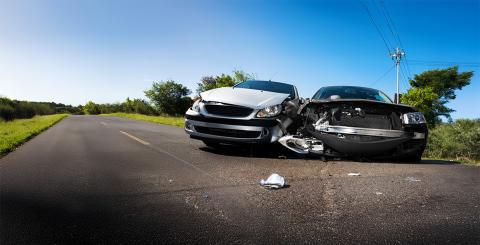How is vehicle towing capacity determined?

When comparing vehicle tow ratings, it’s easy to get bogged down in the sheer selection of models on the market. The first thing is to determine what your needs are. Are you planning to tow a boat, an RV, a camper, or a trailer? How much weight are you hauling and—more importantly—how far are you going? The answers to these questions can help you pick the right vehicle.
But first, it helps to understand why some vehicles have a higher towing capacity to begin with. Read on to learn how a vehicle’s towing capacity is determined.
The right mechanics
The things that have the biggest impact on towing capacity are engine displacement, power, and configuration.
Midsize SUVs like the Honda Pilot, Toyota Highlander, and Kia Telluride are a case in point. Although industry preferences can change over time, the standard pulling power for this vehicle class is 5,000 lb. (2,267 kg). These models usually have V6 engines and 300+ hp. Automakers tout the V6 engine for its ability to power through long hauls without undermining reliability.
But there are some exceptions in the midsize category. The Ford Explorer and Subaru Ascent both have a turbocharged 4-cylinder engine that can tow just as much as the brawnier models. Be forewarned though: While small turbocharged engines perform well under pressure and consume less fuel in the process, they usually have to work harder than a V6 to get the job done and longterm reliability issues have been reported.
So for optimal towing, a naturally aspirated engine—ideally a V6—is best. That partially explains the tow rating of the Mazda CX-9, a turbocharged 4-cylinder midsize SUV that can only muster 3,500 lb. (1,587 kg) of towing capacity. For product reliability reasons, Mazda does not recommend pushing the limit. And that’s still enough power to tow an RV or a small boat.
Note that some vehicle manufacturers require you to add a tow package or additional transmission cooler. Talk to your dealer before you buy.
Structural strength
Structural strength is another factor that can boost or impede a vehicle’s towing capacity.
Vehicles in the midsize pickup class, which includes models like the Chevrolet Colorado, GMC Canyon, Ford Ranger, Jeep Gladiator, Nissan Frontier, and Toyota Tacoma, are built on a steel frame.
In “body-on-frame” construction, the truck body is mounted on a separate steel structure. This tried-and-true solution may seem rudimentary by today’s standards, but it’s still the most effective way to improve a vehicle’s structural strength. In simple terms, body-on-frame pickups can usually pull heavier loads.
So a midsize pickup truck will have much greater towing capacity than a similarly sized SUV, even if they have the same V6 or turbocharged 4-cylinder engine. For reference, body-on-frame tow capacity ranges from 6,500 lb. (2,948 kg) to 7,700 lb. (3,492 kg).
The Honda Ridgeline, by comparison, is a unibody pickup built like a midsize SUV. The only one in its class not mounted on a steel frame, it maxes out at 5,000 lb. towing capacity (2,267 kg).
Vehicle weight
The other factor that can impact a vehicle’s towing capacity is its net weight. This becomes especially important with full-size pickups like the Chevrolet Silverado, GMC Sierra, Ford F-150, and Ram 1500, and comparably sized SUVs like the Chevrolet Tahoe, Suburban, GMC Yukon, Ford Expedition, Nissan Armada, and Toyota Sequoia. The basic rule of thumb is, the heavier the vehicle, the lower the towing capacity. The trick is not to exceed the weight limit that the chassis, suspension, tires, and mechanics can support.
In the industry, this is known as the Gross Vehicle Weight Rating (GVWR), or the maximum weight of a vehicle loaded down with cargo and passengers. To prevent mechanical problems when towing, it’s especially important not to go over the GVWR.
And it’s not just full-sized trucks that use this unit of measure; every vehicle has a GVWR. Do the research so you know exactly how much weight yours can carry. It’s important information—especially when heading up to the cabin with the boat, family, and gear in tow!
Above all, follow the manufacturer’s towing instructions. Your owner’s manual is your best friend when it comes to taking the right precautions and figuring out what you can tow.
And remember—a good auto insurance is just as important as your vehicle’s towing capacity!



